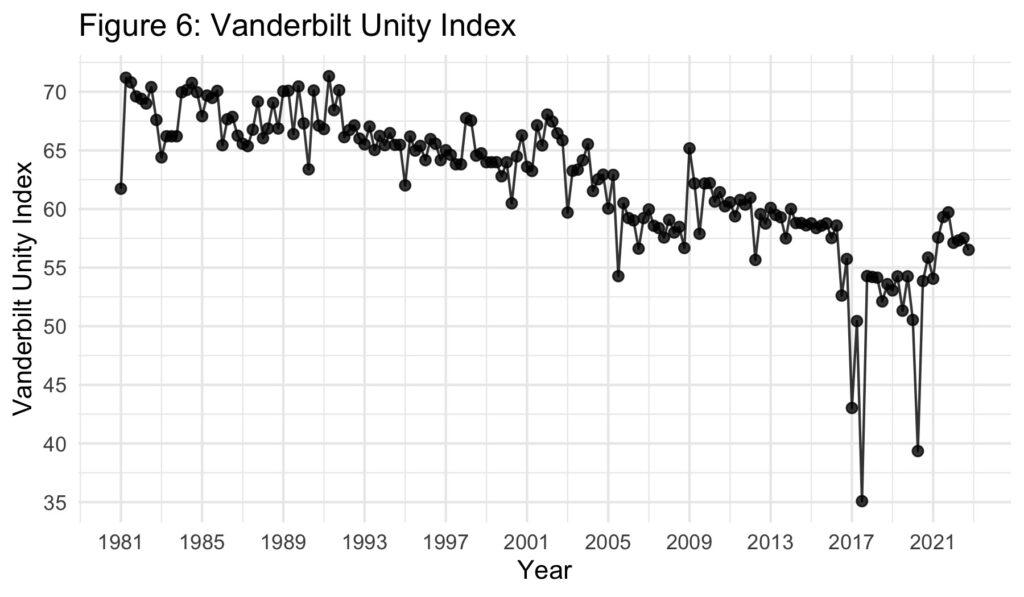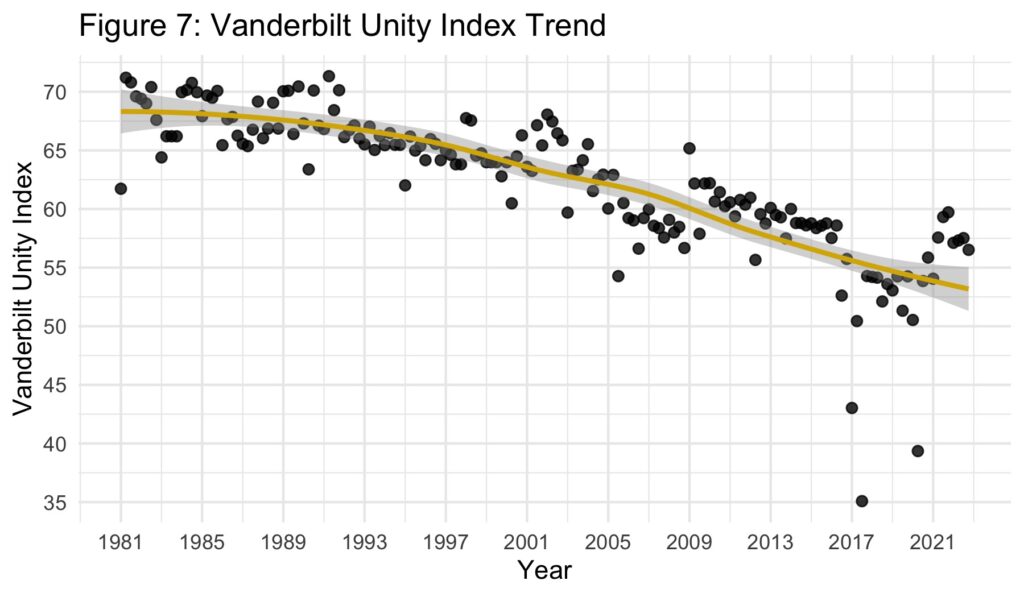The Vanderbilt Project on Unity & American Democracy’s latest Vanderbilt Unity Index, a quarterly measurement of Americans’ general faith and trust in democracy, remained largely stable for a third consecutive quarter, even through the heated rhetoric surrounding the 2022 midterm elections.
Today, the Unity Project released the 2022 fourth-quarter Vanderbilt Unity Index. While the VUI shifted downward by a single point from 57.5 at the end of 3Q 2022 to 56.5 by the end of the fourth quarter, such a shift is so small as not to signal any significant change, noted John Geer, dean of the College of Arts and Science and professor of political science at Vanderbilt University and creator of the Vanderbilt Unity Index.
“Overall, the index does not indicate much of a change in America’s sense of national unity despite aggressive electioneering and often nasty attacks in the runup to and immediate aftermath of competitive midterm election campaigns,” Geer said.
While the VUI remained largely static, the index’s small downward shift resulted largely from a change in one of its components, namely a slight increase in those identifying as “very conservative” or “very liberal.” Still, Geer observed, these increases (2% for those identifying as “very conservative” and 1% for those identifying as “very liberal”) are not large enough to be viewed as significant, and future releases will show whether the change is enduring.
“The fact that the VUI has remained unchanged for the last three quarters could indicate that Americans’ general faith and trust in democracy is reaching a new equilibrium after the wilder spikes seen during the Trump presidency,” Geer said. The interesting test, he added, will be the battles that unfold during 2024.
The VUI is composed of five inputs from publicly available survey data:
- Presidential approval
- Political and ideological extremism
- Social trust
- Political and social unrest
- Congressional polarization
Together, these data points attempt to measure fluctuations in Americans’ general trust in their political institutions as opposed to the public’s reactions to individual policies or candidates. More information and a deeper look into the construction and process of creating the VUI can be found here.

